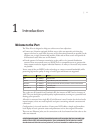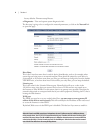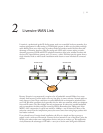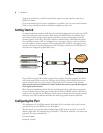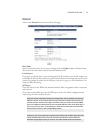
| 7
2
Livewire-WAN Link
Livewire is a professional-grade IP Audio system, used over controlled local area networks. As a
modern replacement for older analog or TDM digital systems, it offers very low delay and high
audio fidelity. ere are a wide range of products made for broadcast studio facilities that take
advantage of Livewire: interface nodes for analog and AES3 audio, routers, mixing consoles,
dynamics processors, ISDN and POTS telephone interfaces, delay units, satellite encoders and
receivers, PC-based delivery systems, and – of course – codecs. Facilities span the gamut from a
single interface Node to multi-studio installations with dozens or even hundreds of connected
devices.
Because Livewire is uncompressed, it requires a lot of bandwidth: around 3Mbps for a stereo
channel. And because Livewire needs to be very low delay, it cannot tolerate a network with too
much latency or jitter. ese conditions are easily fulfilled with an inexpensive switched Ether-
net LAN. But these conditions don’t generally exist for wide area networks, which use telephone
lines and IP routers. e iPort bridges the two environments. It reduces the needed bandwidth
and accommodates the delay and jitter caused by WANs. Remember that 3Mbps rate? After
MPEG AAC compression, a typical rate would be 140kbps – over 20 times less. Most of the
reduction comes from the compression process, but some comes from using larger packets with
less header overhead.
If you already have a Livewire-based installation, the iPort is a simple and low-cost way to
extend it over a wide-area IP network. Connect the local network to one of the iPort’s jacks, the
WAN to the other, make some configuration choices, and you are ready to go. is application
nicely illustrates the advantages of IP Audio – were you to do the same thing with traditional





